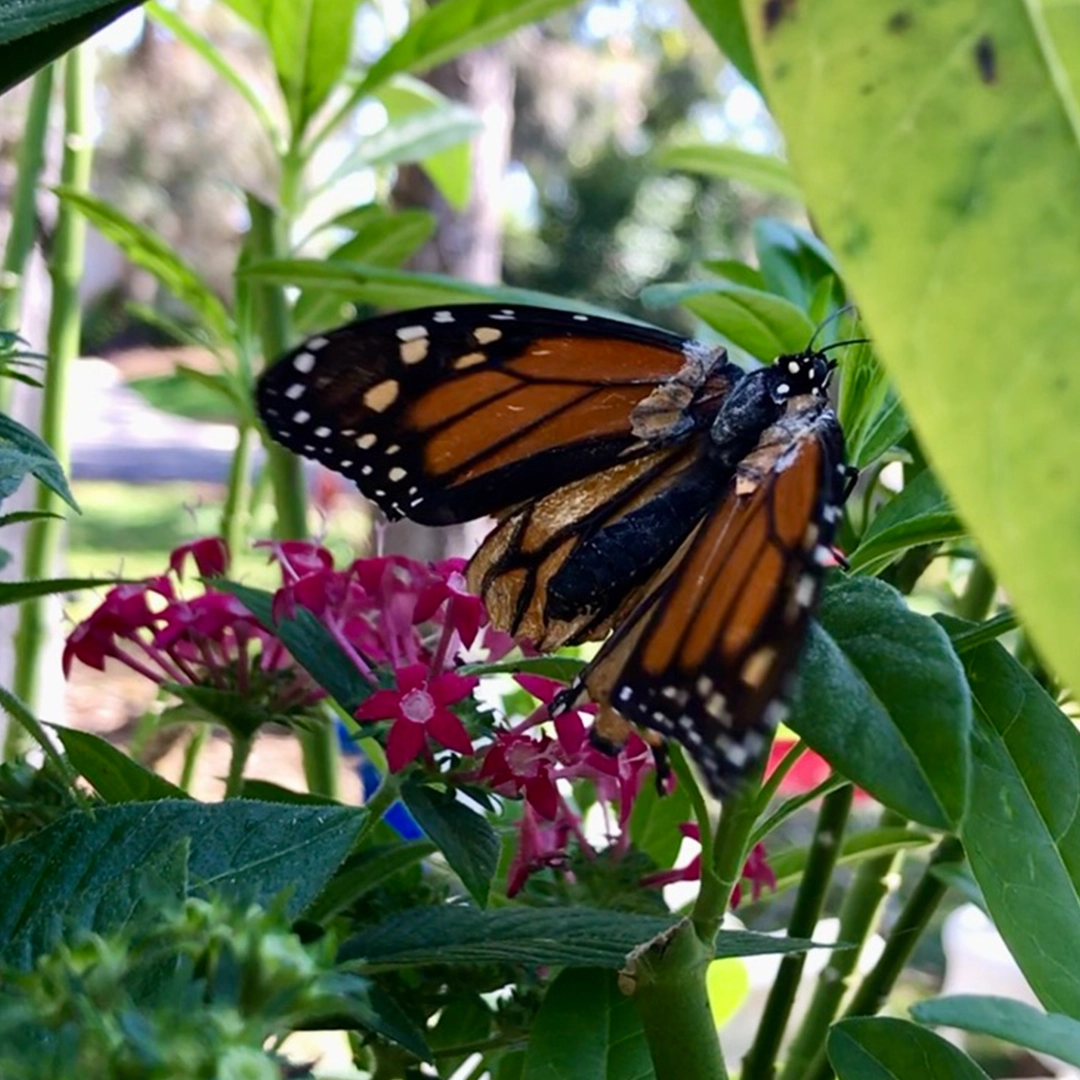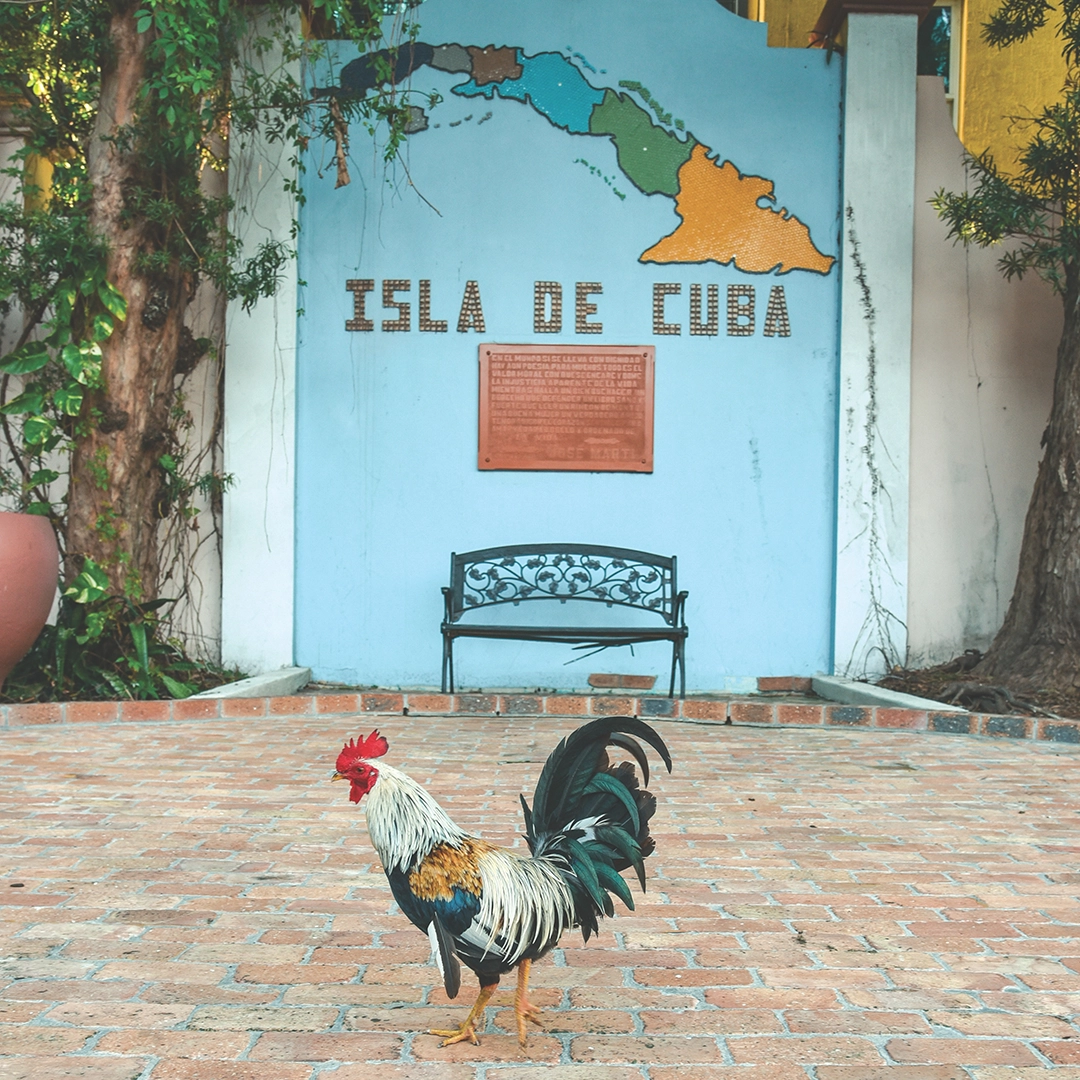by Craig Pittman | June 8, 2021
The Race to Rescue Florida’s Coral Reef
To save the country's only barrier reef, biologists are launching a counterintuitive campaign uniting the conservation community with Disney and SeaWorld

This is a most unlikely place to find a sunken treasure: a nondescript industrial park off the Orange Blossom Trail in Orlando, tucked behind a pair of car dealerships. Yet here, inside a windowless office suite with nothing on the door but a number, stand rows of rippling tanks full of marine corals of every shape and size.
There’s knobby brain and green star, yellow finger and rough cactus, many the size of a human hand but none bigger than a foot long, all resembling squat and colorful stones with grooved patterns that give them a psychedelic look.
These are not stones, though. Nor are they plants, although they host algae that contain chlorophyll in their bodies and use photosynthesis to create energy. Corals are actually animals that move and eat and occasionally lash out at perceived threats.
Right now, in this place of captivity, they appear to be thriving, biologists say. They spend their days beneath banks of eerie blue lights set to mimic the sun’s waxing and waning heat and light across different times of the year. Meanwhile, magnet-powered fans keep currents running in the saltwater environment of the 16 tanks. Clear on top and opaque on the sides, each tank is 4 feet wide, 8 feet long and 2 feet deep. The tanks hold 300 gallons of water, and they’re designed to mimic the corals’ home in North America’s only coral barrier reef, which stretches for about 360 miles along Florida’s southeast coast.

On the wall hangs a banner proclaiming this to be the Florida Coral Rescue Center, the nation’s largest caretaker of rescued corals. It’s the product of a remarkable partnership among theme parks, aquariums, academia and government agencies, all racing to save Florida’s offshore reefs from a ruthless and mysterious disease.
“Basically, it’s like there’s a forest fire burning through them,” explained Jim Kinsler, aquarium curator at SeaWorld and the man in charge of this coral collection.
That’s the reason for the word “rescue” in the name. The center is designed to rescue the reef from being destroyed forever through saving some corals that have been untouched by the disease. After cultivating them in captivity while scientists search for a cure to what’s killing them, researchers may someday return their offspring to their home off the Florida coast.
The catch: No one knows how long this rescue will take—or if a cure will ever be found.
They are one of the most underestimated animals in the ocean, but one of the most important.
— Andy Stamper
The Orlando coral center is one of 22 repositories scattered across 14 states for these reef refugees, according to Andy Walker of the Fish & Wildlife Foundation of Florida, which helped finance and coordinate the project.
“When the Florida Fish and Wildlife Conservation Commission realized in 2018 that they would have to pull the corals out of the last disease-free waters, they came to us and asked, ‘Where can we put them?’” Walker said.
To save these odd but essential undersea creatures has required an unprecedented effort that united groups that normally don’t talk to each other, much less join forces.
“You almost never have Disney World and SeaWorld working together,” said Jennifer Moore of the National Oceanic and Atmospheric Administration, who serves as co-chair of the coral rescue team. “That’s part of what’s so special about this whole thing.”
The Silent Coral Killer
Corals are crucial to the survival of marine life because they create elaborate reefs that provide a home and a hiding place for fish, crabs and other creatures. Reefs form when the corals’ free-swimming larvae find a good spot, such as submerged rocks, on which to anchor themselves and then slowly divide, secreting calcium carbonate all the while, to form some of the most beautiful and biologically diverse habitats in the ocean.

“They are one of the most underestimated animals in the ocean, but one of the most important,” said Andy Stamper, conservation science manager for Disney’s Animals, Science and the Environment.
“Reefs are extremely important for storm protection for houses and the communities themselves,” Stamper said. “They take all the energy out of the waves that are coming in. They’re like a sea wall.”
But in recent years the corals have come under serious stress from steadily rising water temperatures caused by climate change.
Then, in 2014, off the coast of Miami, divers spotted something even more alarming. Large sections of the Florida reef were dying off for no apparent reason. As the die-off began sweeping through the reef both to the north and the south, biologists dubbed it stony coral tissue loss disease (SCTLD).
“Basically, they lose tissue, and then portions of the (coral) column die,” Moore explained. “Lesions form and the disease progresses through the whole colony. If it kills all the tissue in the whole colony, then there’s no coming back from that.”
Soon the disease had spread throughout much of the reef, affecting such popular diver destinations as the Breakers Reef area off Palm Beach and the Sombrero and Molasses reefs in the Keys. The one area that seemed to be untouched was down in the Dry Tortugas at the very end of the Keys, but on June 2, federal officials announced that SCTLD has been discovered there, too. Meanwhile, SCTLD has also begun showing up in reefs in other parts of the Caribbean, miles from Florida.
Coral diseases usually attack no more than three or four species at a time, Moore said. This one is especially dangerous because it’s infected 22 different species.

“Some of them it kills in just a couple of weeks,” she said. “Others it’s more like a slow burn, and it takes months or even years.”
According to Andy Bruckner, research coordinator for the Florida Keys National Marine Sanctuary, about half the coral species have been affected, and in some sites, “60 to 80 percent or more of the susceptible corals were knocked out. It was just devastating … and new lesions keep popping up.”
Despite seven years of investigation, scientists remain baffled about exactly how this started and how it’s spread so quickly, Moore explained.
One theory is that what’s ailing the corals is a bacterial infection. Applying an antibiotic paste does seem to clear up the disease, Moore said. However, she went on, smearing it on is so labor-intensive for even one coral that it’s not a practical solution to what’s spread throughout the reef.
If it kills all the tissue in the whole colony, then there’s no coming back from that.
— Jennifer Moore
Scientists are also unsure how the disease has spread, jumping across miles of ocean to land in places like Jamaica and Puerto Rico. One suspected carrier is the water carried as ballast aboard ships with little or no cargo, to lend them stability while on their voyage. Ballast water is then dumped when the ships reach port. Those dumps of ballast water have already been blamed for spreading exotic larvae and microscopic invaders in ports around the world, Moore said.
By 2018, scientists studying the progression of the disease realized that if they were to save anything of the reef, they would have to take drastic measures. They concluded they had to treat the corals like the animals Noah saved from the flood, in this case by putting them all in a bunch of landlocked arks.
“We started collecting corals in fall of 2018,” Moore said. “We’ve never even attempted anything like this before.”
Rescue Mission
Back in the 1970s, in a conservation measure, Florida officials banned the collection of corals from the reef except for permitted scientific research. As a result, despite aquarists’ experience with growing corals from the Pacific and Indian oceans, no one knew much about how to cultivate Florida’s corals in captivity.
Now, with the reef itself in peril, everyone had to learn in a hurry.

Divers went out for three or four days at a time aboard an 88-foot ship called the M/V Makai. The ship was originally built in 1979 for gun manufacturer William Ruger, who also designed it. Its home port is near Key West, and it’s previously been rented for everything from cultural tours of Cuba to bird-watching excursions.
This is how the coral collection worked. Divers boarded the Makai and set sail for the few remaining healthy sections of the reef, particularly in the Dry Tortugas. They carried a list of what types of corals were needed.
Upon their arrival, they plunged into the water and swam down clutching mesh laundry bags. They selected the best specimens of each endangered species, pulled them loose, trimmed off any dead tissue and put the living corals into a bag. Also going into the bag: a tag indicating precisely where each specimen was collected, in hopes its offspring could someday be returned to the same spot.
The divers then swam up to the surface with their finds and handed the bags over to a member of the boat’s crew. The crew put the corals into a plastic water-filled tank and then delivered them to holding tanks on shore in Miami and Fort Lauderdale.

“We learned a lot those first few dives,” Moore said. “For instance, we learned the corals don’t like to make direct contact with the plastic tank, so we learned to raise them up by mounting them on a terra cotta tile.”
All told, Walker, of the Fish & Wildlife Foundation, said, successive expeditions to the reef collected precisely 1,999 coral specimens to bring back ashore. The largest group of those, 753 of them from 18 different species, wound up in the Orlando facility, which has its own remarkable origin story.
Unlikely Allies
Once the divers began collecting corals, “the first order of business was just to keep them alive,” Walker said. But soon another issue loomed: Where to put them all?
The first ones were held in big tanks at the University of Miami and Nova Southeastern University, but it wouldn’t be long before those facilities would be swamped.
At that point, the agencies in charge of the project put out a distress call to the Association of Zoos and Aquariums for assistance. The first aquarium to volunteer was a facility in Iowa, soon followed by others in New Jersey, Nebraska and elsewhere.
In Florida, Disney and SeaWorld joined with the Mote Marine Laboratory & Aquarium in Sarasota and others to brainstorm about where they could find room for the corals, Kinsler, the SeaWorld curator, said. Someone had the idea to contact what he called “our colleagues in the hobbyist world.”
Something akin to a miracle followed.

A company called World Wide Corals had been growing exotic corals in Orlando to sell to people in the aquarium trade. But the company needed more space. Company officials told SeaWorld they had begun building a new facility nearby and would be happy to transfer the lease on their old one—selling all the water tanks and other aquarium-related equipment at a fraction of what they would’ve cost new.
The coral rescuers snatched it up and then spent $150,000 on upgrades to the tanks, pumps, air conditioning system and the building’s security, Walker said. They also installed a large generator to keep the power going in the event of a hurricane or some other natural disaster. By March 2020 they were moving the corals from the universities in South Florida to the tanks in Orlando.
“Within a couple of months, it was ready to go,” Kinsler said. That speed was important because “time was of the essence.”
The Fish & Wildlife Foundation leases the building and pays for the utilities. Through donations to the Foundation, Disney is footing the bill for these operating costs for three years. Meanwhile, SeaWorld provides the on-site employees.
What brought such a disparate group together, Kinsler explained, is simple: “We’re all biologists, so we really understand how serious this disease is. We had to act.”
Some of the money the Fish & Wildlife Foundation used to upgrade the rescue center came from donors. For instance, Bass Pro Shops donated $100,000, Walker said. Some contributions came from Florida motorists. The project benefited from 20 percent of the proceeds from the sale of the “Discover Florida’s Oceans” license plate.
We’re all biologists, so we really understand how serious this disease is. We had to act.
— Jim Kinsler
Each morning, SeaWorld workers show up at the Orlando office park aquarium to feed the corals. They use a turkey baster filled with krill, dropping the tiny morsels into the corals’ open mouths.
“We feed them in the early morning,” said Sara Urbanski, one of the SeaWorld biologists working with the coral. “They’re generally nocturnal, so we start the day with the lights off, and we wear headlamps.”
Every month they document the corals’ growth and health and add to the expanding storehouse of knowledge about the lives of these mysterious animals. But the ultimate answers to this environmental emergency aren’t in Orlando. The answers lie in the areas of the coral reef that mysteriously survived the disease, of course—and, maybe, across I-4, in the Tampa suburb of Apollo Beach.
A Coral Comeback
The most hopeful sign for the future of the coral rescue occurred at 12:45 p.m. on August 18, 2019, in a 350-gallon tank. The tank sits in a small, dark room on the second floor of a wooden building next to the Tampa Electric Co. power plant in Apollo Beach.
By manipulating water temperatures, flow and lighting, scientists fooled a tank full of pillar coral from the Keys into believing it was just the right time to spawn: namely, two days after the August full moon, 100 minutes after sunset.

This marked the first time in history that Atlantic Ocean coral had been persuaded to spawn in a laboratory, a crucial step in eventually returning healthy coral to the Florida reef.
The scientist in charge, Keri O’Neil of the Florida Aquarium, nearly missed it.
She had been keeping a close eye on the 30 corals in the tanks, but then left the room for just a minute. Upon her return, an assistant pointed out that one of the corals was releasing its sperm.
“What?” O’Neil blurted out.
She was stunned to see a plume of sperm in the water. Soon the female coral in the tank joined in, sending out their eggs to meet up with the sperm and become fertilized. The spawning continued for 30 minutes, and soon 30,000 coral larvae were swimming around in the tank.
“They were spawning right at the time they would have spawned in the wild,” O’Neil said to a Tampa Bay Times reporter.
In April 2020, the Florida Aquarium crew persuaded another species, the ridged cactus coral, to spawn in captivity for the first time, also a historic event. Then, in August, their crop of captive pillar coral once again spat out their sperm and eggs right on time.
“Every year we spawn this species, we are one step closer to assuring its long-term survival in Florida,” O’Neil said last year.
While the Florida Aquarium is busy growing new corals, some scientists are back at the reef, examining the ones that apparently have survived their encounter with the deadly tissue disease.

“The corals that are left are a combination of corals that are more resilient as well as those that just never got hit,” said Bruckner of the Florida Keys National Marine Sanctuary. “Within one species of coral, there’s many different genetic strains. Some are stronger than others. They’re apparently more tolerant of disease. They can tolerate more degradation of the water quality, too. We’re trying to get more information on why some survived and some did not.”
Bruckner compared the situation to the COVID-19 pandemic. Some people got the disease and suffered horribly and died. Others got it and survived and ended up with antibodies. Of course, the analogy is far from exact.
“The difference with corals is that they’re not a single organism—they’re colonies,” he said. “They’re a lot of little polyps that are attached together to form one part of the reef. They can stand to lose some polyps and meanwhile the rest of the coral is fine.”
The effort to rescue Florida’s corals has created a different kind of colony—a human one, full of people cooperating on a common objective.
“I’ve worked on coral reefs all over,” Bruckner said. “I’ve seen in a lot of countries where you’ve got people trying to help corals but they’re all going in different directions. That’s why this is so surprising. Here we’ve got academic institutions, theme parks, government agencies, even volunteers, all working together for the same goal. I’ve never seen that before.”





